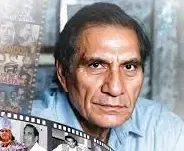How Did B. R. Chopra Distinguish Between Television and Cinema?

Synopsis
Key Takeaways
- B. R. Chopra distinguished between the intimate nature of television and the expansive nature of cinema.
- Television allows for detailed storytelling, while cinema condenses narratives.
- Chopra's work, especially ‘Mahabharat’, played a crucial role in shaping Indian television.
- His insights remain relevant, highlighting the unique qualities of both mediums.
- The impact of his productions continues to resonate with audiences today.
Mumbai, April 27 (NationPress) A vintage clip featuring the esteemed filmmaker B. R. Chopra has emerged online, showcasing his insights into the distinct realms of television and cinema.
The video, shared by Indian broadcaster Prasar Bharati, highlights Chopra's perspective: “Television is akin to a compact print. Capturing someone's image is like creating a small, compact print, whereas a big screen offers an enlarged view. This is why the big screen is often described as 'larger than life'.”
He elaborated on another key difference, stating that television serves as an incredibly personal medium. It allows for speeches, advice, and a deep dive into narratives.
“In films, we often omit many details. We focus solely on what is crucial. For example, in the film adaptation of ‘Mahabharata’, created in 1993, it was impossible to condense all the material into a single film. Hence, television becomes a more intimate medium, a space for conversation where individuals can express themselves and provide insights. The serials produced carry significant messages,” he explained.
B. R. Chopra, a legendary filmmaker, was the elder sibling of Yash Chopra, who established Yash Raj Films. Yash Chopra collaborated with his brother at the latter’s production house upon his arrival in Mumbai.
Transitioning from film to television, B. R. Chopra ventured into a nascent medium in India. He produced the immensely popular ‘Mahabharat’ series, aired on India’s national broadcaster Doordarshan. The series achieved remarkable success, re-broadcasted during India’s initial lockdown to entertain those confined at home in an effort to combat the pandemic.









